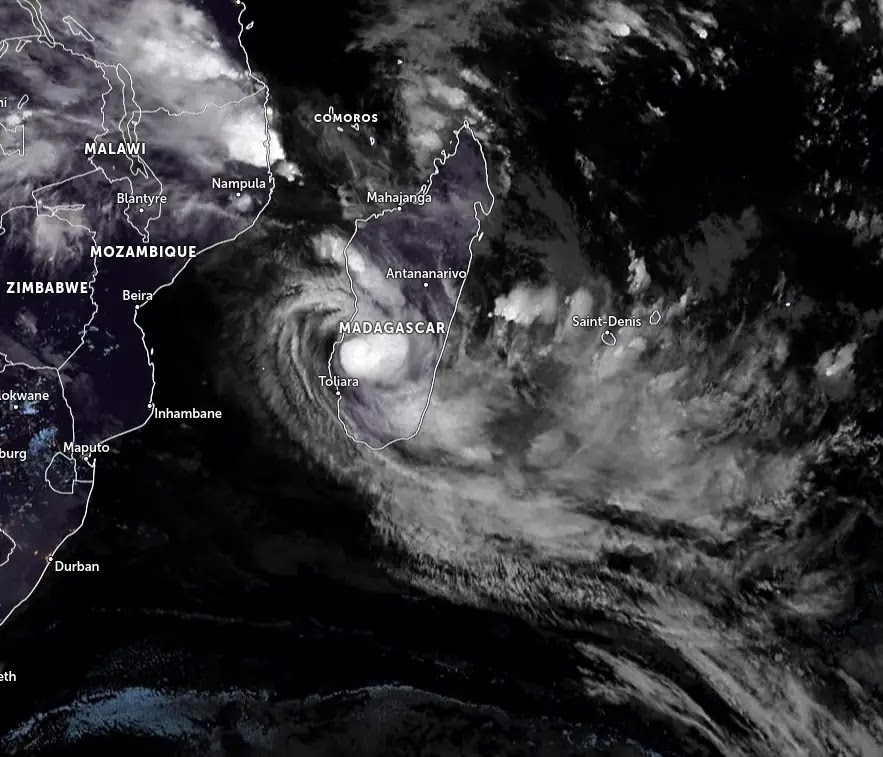Tropical Cyclone Alvaro made landfall in southwest Madagascar on January 1st, 2024, marking the first significant cyclone impact on the island nation in the ongoing 2023-2024 cyclone season for the southwest Indian Ocean region. This season, spanning late October to May, has brought unprecedented challenges to the region, with Alvaro being the latest cyclone to wreak havoc.
Impact of Current Cyclone Alvaro
According to the latest data, Cyclone Alvaro has left a trail of destruction, affecting over 17,200 people in Madagascar. Unfortunately, the toll includes at least 5 reported deaths and 8,400 individuals displaced in this southern African country known for its rich biodiversity, including vanilla and lemur populations. The actual death toll could potentially be higher, as rescue and recovery efforts are still ongoing.
Recent Cyclones Hitting Madagascar
Madagascar, prone to violent storms, has been facing a series of cyclonic events in recent times. In January 2023, Cyclone Cheneso struck the northeast, impacting over 90,000 residents. Last February, Cyclone Freddy made landfall on the southeast coast, resulting in 17 fatalities and displacing 19,000 individuals. The cumulative impact of these successive cyclones has tested the country’s resilience and disaster management capabilities.
Alvaro’s Strikes Vulnerable Regions

Cyclone Alvaro has particularly affected provinces like Atsimo-Andrefana in southwestern Madagascar, which already face immense flooding challenges during heavy rains. The cyclone has exacerbated these issues, hampering evacuation efforts and draining excess water towards the sea. This highlights the vulnerability of certain regions that are prone to natural disasters and the urgent need for targeted interventions.
Formation and Intensification
Alvaro originated on December 31, 2023, marking the onset of the 2023/24 South-West Indian Ocean Cyclone season. By January 1, the storm intensified into a severe tropical storm, reaching its peak strength with sustained winds of 110 km/h (70 mph). The cyclone maintained its intensity until making landfall, after which it rapidly weakened over the mountainous terrain. On January 2, Alvaro was categorized as an overland depression. However, as it exited into the Indian Ocean on January 3, it quickly re-intensified into a tropical storm.
Impact and Response
Meteo Madagascar issued a Yellow alert on December 31 for the districts of Morondava, Manja, Morombe, and Toliara, advising residents and mariners to exercise caution. Following landfall, the alert was upgraded to Red. The National Bureau of Risk and Disaster Management reported the relocation of over 400 individuals to safety at six evacuation sites. Eight houses, six schools, and various other structures suffered severe damage, with the regions of Haute Matsiatra, Atsimo-Andrefana, and Menabe being the worst affected.
Important Questions Related to Exams
1. What was the initial classification of Alvaro when it formed on December 31, 2023?
A) Tropical Depression
B) Severe Tropical Storm
C) Tropical Storm
2. At its peak, what were the sustained winds of Tropical Cyclone “Alvaro” on January 1, 2024?
A) 90 km/h (56 mph)
B) 110 km/h (70 mph)
C) 130 km/h (81 mph)
3. What alert level did Meteo Madagascar issue for Morondava, Manja, Morombe, and Toliara on December 31, 2023?
A) Yellow
B) Green
C) Red
Kindly share your responses in the comment section.




 Bhartiya Bhasha Utsav 2025: Celebrating ...
Bhartiya Bhasha Utsav 2025: Celebrating ...
 Starlink Internet: Revolutionising Globa...
Starlink Internet: Revolutionising Globa...
 Google 2025: Top Searches by Indian User...
Google 2025: Top Searches by Indian User...







